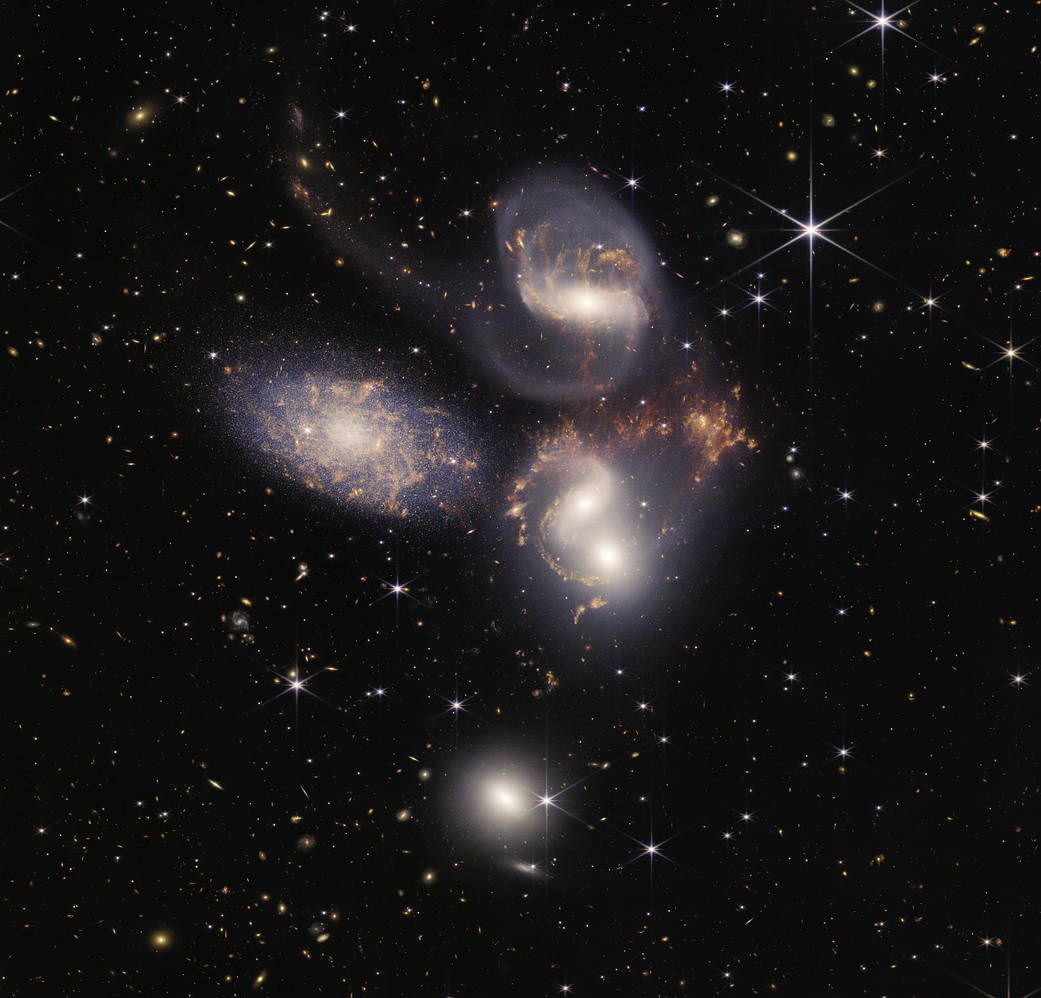
The common theme running through all the amazing JWST images is how dynamic the universe is. The images of galaxies and stars, and nebulae, are snapshots in time of an ever-changing and evolving cosmos. Perhaps the most dramatic of the set is the cosmic dance of Stephan’s Quintet, a group of galaxies, each containing billions of stars, that are drawn together by gravity at speeds of a million miles an hour. As we witness the resulting collisions, the vast reservoirs of gas and dust in each galaxy smash head-on, triggering a gravitational collapse that produces an explosive period of new star formation. The once symmetrical and orderly spiral arms that each galaxy displayed have become twisted and contorted, thrown into sweeping arcs of stars and gas scattered into intergalactic space. This multi-galactic firework display will play out over the next billion years, a blockbuster movie that permits humanity a single brief frame.
The infrared detectors of JWST are tuned to the dramatic starbursts that have resulted from these collisions. Showing in red in the image (but remember that these images are made by invisible infrared light and have been given color for human vision) are the star-forming regions, particularly noticeable in the shock front between the topmost galaxy (NGC 7319) with it sweeping tidal tail, and the central pair (NGC 7318A and B). Looking on in awe of this spectacle are the inhabitants of the leftmost galaxy, NGC 7320, which sits on our line of sight and is closer to our Milky Way than the interacting cluster. NGC 7320 itself is streaked with red-gold streams of new star formation. Even more remarkable is that JWST allows us to see the individual stars that make up NGC 7320, courtesy of the amazing 150 Megapixel image. With their stunning detail and resolution, JWST invites you to dive into the cosmic ocean and swim amongst the stars!
All the newly released images are here: https://www.nasa.gov/webbfirstimages





